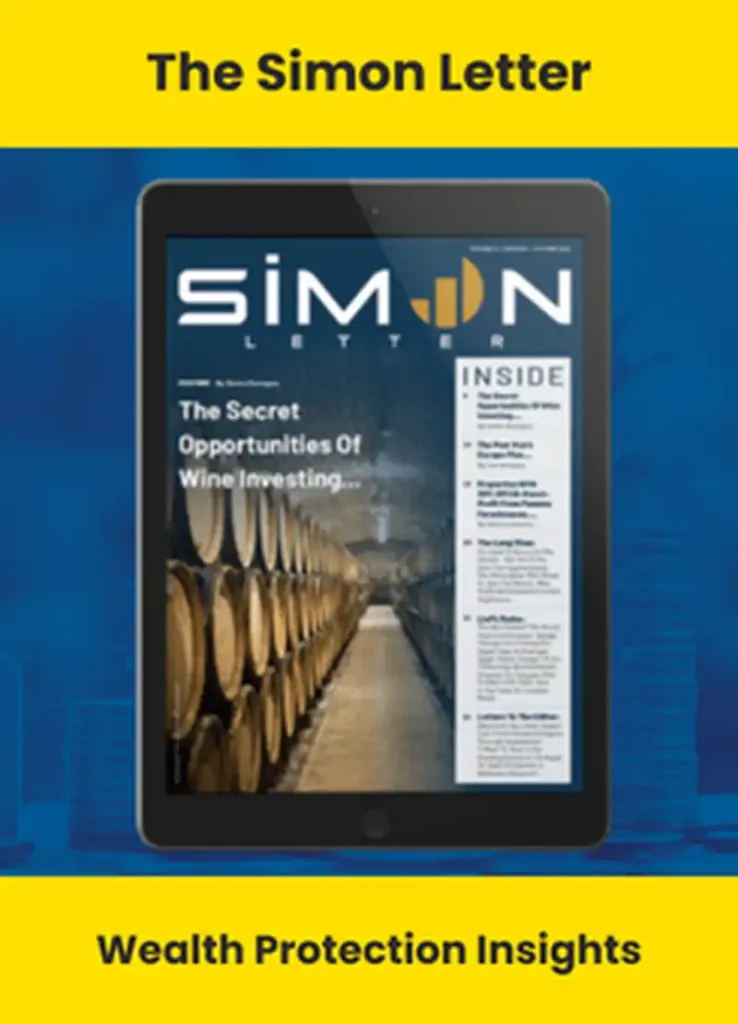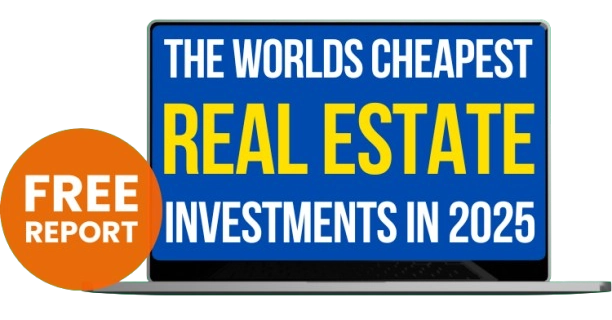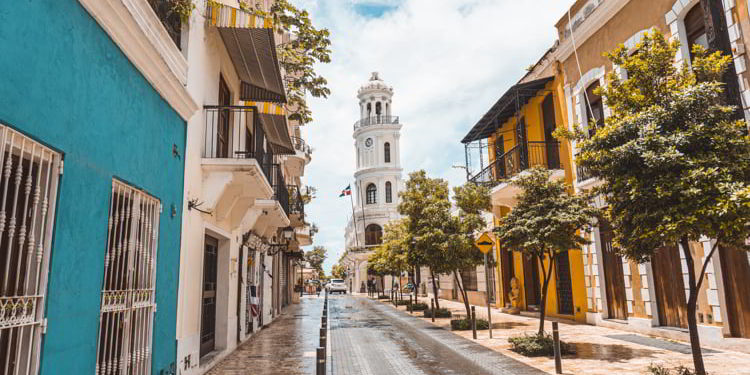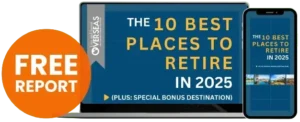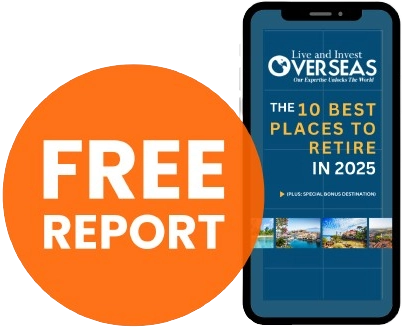Lief used Other People’s Money (OPM) to launch his real estate investing career in the United States, and we were able to borrow for our first purchases overseas, as well.
For his first investment, in Chicago, Lief negotiated a 98% LTV loan from a local bank running a special offer, and we bought our house in Ireland with a 95% LTV financing from Bank of Ireland.
While our second overseas property investment—a pre-construction condo on the coast of Spain—wasn’t financed by a bank, it was made using developer terms that allowed us to pay just 5% down and then another 25% over two years, with the final 70% not due until completion of the unit.
Bank financing in the United States comes with an additional cost if your LTV is greater than 80% in the form of private mortgage insurance (PMI). Ask Lief how he got out of paying PMI for his Chicago purchase if you meet him at a conference sometime.
Private mortgage insurance isn’t a requirement when borrowing to buy property in most markets overseas, but a local life insurance policy naming the lending bank as the primary beneficiary if you die before the mortgage is paid off is. You can buy the policy through the bank or from a third party, but a current life insurance policy in your home country won’t qualify.
More important, most life insurance companies around the world will insure you only up to age 70 or 75. That limitation restricts the
mortgage term if you’re older than 50 when applying for financing. A 65-year-old, for example, can qualify for a 10-year loan at best.
Don’t forget the cost of the life insurance when calculating your return on investment; it can take a bite out of your net yield.
Here Are Eight More Things You Should Know About Bank Financing Overseas:
1. Even if you’re 40 or younger, don’t expect a 30-year mortgage.
These are uncommon outside the United States. Twenty years is typical; 25 years can be possible.
2. Likewise, fixed-rate mortgages, with the rate fixed for the entire term of the loan, aren’t typical.
Expect variable-rate financing. In France, the monthly payment for our variable-rate mortgage changed only if the interest rate increased enough to extend the life of the loan more than two years beyond the original term. At one point, that happened, and our monthly payment increased slightly.
3. If you’re buying in a market where financing is an option for foreign buyers and you want or need a mortgage, try to get pre-approved by a bank before you begin shopping for a property to buy.
This way you’ll be confident of your purchase budget as well as the mortgage costs, including the monthly life insurance expense.
4. Local financing for non-resident foreign buyers is possible in Panama, the Dominican Republic, Portugal, France, Spain, Italy, and elsewhere in Europe.
We were able to get financing in Ireland because we were residents and earning income in the country. Being able to show one or both of those things makes a big difference in your eligibility for financing; however, you aren’t likely to be able to do this in most places (or maybe anyplace) you want to invest.
5. In some markets where it’s possible to borrow locally as a non-resident foreign buyer, the terms make the idea unattractive.
Banks in Belize and Nicaragua, for example, offer financing to foreigners but at double-digit interest rates.
6. Interest rates in Europe
In Europe, on the other hand, interest rates are extremely low thanks to negative central bank rates. It can be possible to qualify for a variable-rate mortgage with a starting interest rate as low as 2% or less (basically the bank’s margin on lending).
7. Most banks around the world reference metrics similar to those used by U.S. banks when qualifying a borrower.
They look at your overall debt to income ratio as well as the payment amount for the specific mortgage to income ratio.
8. Some banks allow you to include projected rental income as part of your personal income figures when running debt to expense ratios.
If you’re looking for a mortgage in Panama, the bad news is that banks consider credit card limit as debt even if the card has zero balance. A colleague in Panama had to pay off and close all her credit cards to qualify for a mortgage. After the mortgage had been issued, she had no problem getting new credit cards, including one from the bank that had financed her property purchase. Go figure.
Idiosyncrasies like these are why it’s best to speak with a bank before you begin your property search if you hope to use bank financing for the purchase.
However, the really good news is that bank financing isn’t the only available strategy for not having to come up with 100% of the property purchase price at closing.
If financing your real estate purchase overseas through a local bank isn’t a realistic option (because the market where you want to buy doesn’t lend to non-resident foreigners or because your financial situation doesn’t qualify you), you have alternatives.
Financing Option #1: Borrow Back Home
The first and easiest—sometimes even if local financing is available and you do qualify—can be to take out a loan back home. No, your local U.S. bank isn’t going to fund your overseas real estate purchase directly. With the exception of some banks in Texas and California that have at times over the years offered loans in Mexico, U.S. banks don’t have the infrastructure to protect themselves against default in a foreign country. How would they foreclose and recuperate their funds?
U.S. banks do, however, offer home equity loans and lines of credit. This was an important source of funding during the rapidly appreciating U.S. market leading up to 2008. Taking out a US$100,000 equity loan, say, on your principal residence in the United States to invest in a condo at the beach in Brazil or the Dominican Republic can be a straightforward strategy. Your U.S. lending bank doesn’t typically care what you use the money for as long as they’re happy with the metrics to do with the value of the collateral and your debt to income ratio.
You should care, though. If you’re lucky enough to own a piece of property in the United States that has enough equity to allow you to draw out and invest in another property in another country, make sure you run your own numbers and that you’re comfortable with the math. Just because a bank will lend to you doesn’t necessarily mean you should borrow.
The most important calculation to make is whether or not you can cover the payment on the equity line if your overseas rental doesn’t produce the monthly income you’re projecting right away. It can take time to build up a short-term rental clientele, and many short-term rental markets are seasonal, meaning inconsistent cash flows month to month even if your annual rental income should be more than enough to cover your loan payments.
Run worst-case scenarios. The last thing you want is to put your primary residence or even another rental property in jeopardy.
Financing Option #2: Shop For Developer Terms
In addition to tapping into equity you’ve built up back home, another option for financing overseas can come courtesy of the developer. Developers who build for and sell to the foreign market understand that foreign buyers want and can need financing, so many offer payment programs. These can include pre-construction purchase terms, payment plans, and straight-up financing.
Developers are often happy to offer land sales with financing, because this means cash flow that can help cover the costs of installing infrastructure. Typically, with this kind of financing, you don’t receive title until you’ve paid for the property in full. The developer is protected because he technically still owns the property. Your payments are protected by your purchase contract.
Buying pre-construction means a payment plan. This can be tied to construction milestones, or it can mean regular payments (even, for example, monthly payments made on a credit card).
This isn’t financing, per se, as there’s no LTV and no interest rate and payments are due over, say, 12 to 36 months rather than amortized over 20 to 25 years. When the building is complete, you’re required to come up with the final amount due, which can vary from 10% to as much as 50%.
Less common but occasionally possible is full-fledged developer financing.
Typically, a developer can’t afford to do this for all units in a building (because it wouldn’t give him enough cash for construction), but sometimes a developer will offer this for a small number of sales. We’ve seen this most often in Panama and the Dominican Republic.
In some markets, you’ll find sellers willing to carry back a portion of the purchase price if you’re able to make a sizable down payment. Again, this is most common in markets with big pools of foreign buyers. Like developers, though, individual sellers financing a sale aren’t going to give you 30 or even 20 years to pay off the loan. Three to seven years is typical. Expect to be charged interest at the going local rate.
We negotiated the purchase of a building in Panama, for example, where the seller carried back the mortgage at the typical bank rate at the time but for a term of 10 years.
Sincerely,
Kathleen Peddicord
Founding Publisher, Overseas Opportunity Letter


